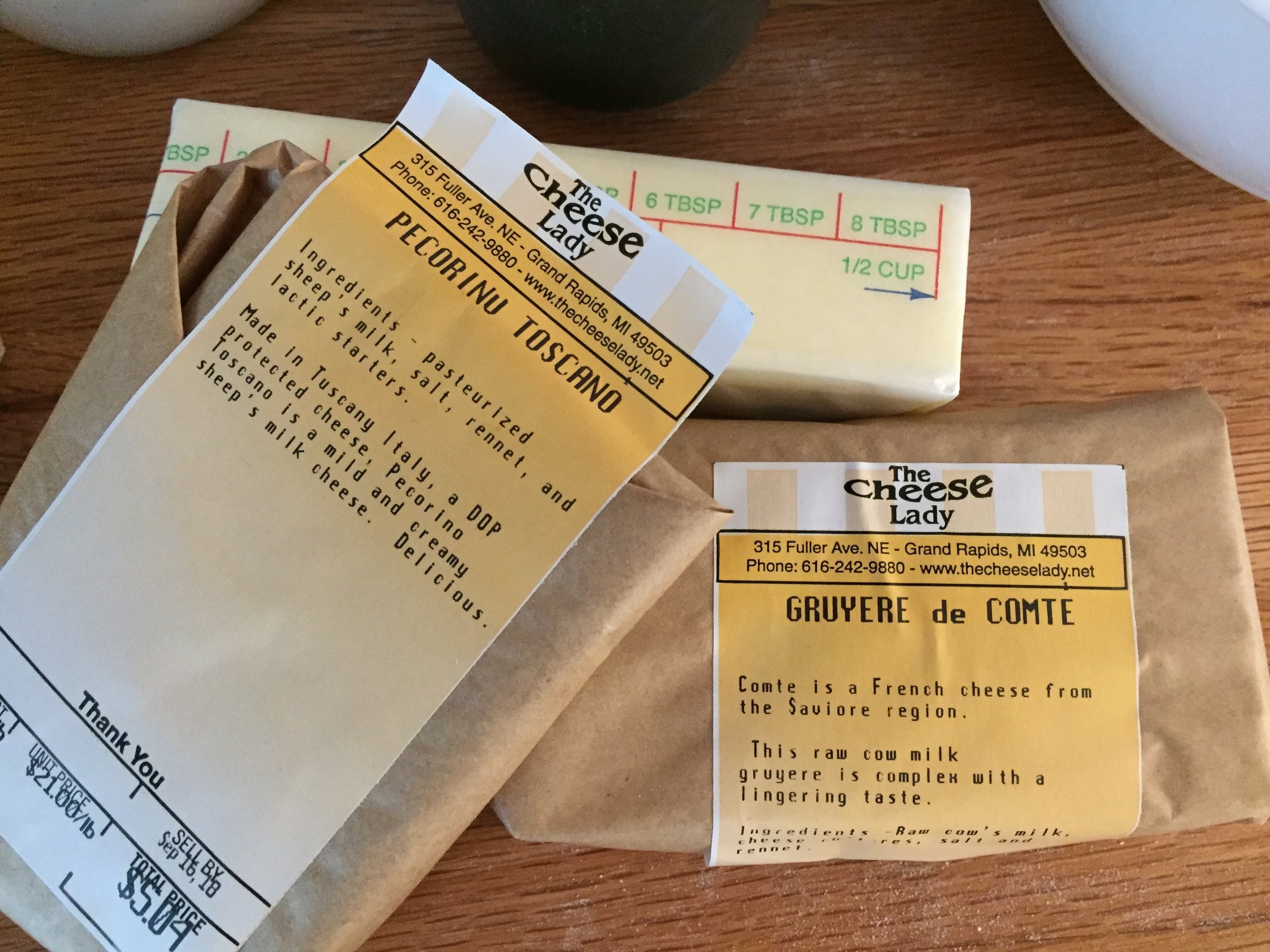Caprese gougères
/Tomatoes and basil here we come!! It's sum-sum-sum-sum-sum-sum-summertime, and we're deep into it. I've been dreaming of a caprese salad and now's the time.
Another visit to The Cheese Lady was in order to score some fresh mozzarella and a tasty grating cheese for some delicious gougères, essentially a cheesy version of profiteroles.
Gruyère is the cheese that's often used in savory gougères but one can certainly waver and choose something equally as tasty. Since I was filling them with mozzarella, tomato and basil, I thought some mozzarella or similar cheese would be a decent addition to the pâte à choux, but I didn't really want a run-of-the-mill grated mozz from the supermarket.
The Cheese Lady to the rescue! A pecorino Toscano was suggested as a good stand in for mozzarella, so that's what I chose for my choux paste. Wanting a little something to grate on the choux tops, I went with a Comté.
You might notice on the package above that the label reads gruyère de Comté, prompting one to ask "What's the diff between that and gruyère, eh? From my very brief research, I learned that a classic gruyère is produced in Switzerland, while a gruyère de Comté comes from the Franche-Comté region (newly re-formed as Bourgogne-Franche-Comté in early 2016) of France on the Swiss border. And, just to add to the confusion, I'll throw one more name in there - the similar Emmental which is also produced in Switzerland but has holes, unlike gruyère. They're all good if you ask me.
So let's make some gougères already.
Basic pâte à choux is made with milk, water, butter, a bit of salt and sugar, flour and egg. For a savory version like this I delete the sugar, add in some black pepper and mustard powder, as well as grated cheese. You could also add herbs if desired, like some dried thyme or basil. Just click here for the full recipe.
Once you've completed the process, just pipe or scoop 'em out onto parchment lined sheet pans.
In this case I topped them with some grated Comté before popping them in the 400ºF oven.
It's generally recommended that you leave the oven door closed for the first 10 minutes of baking, otherwise the puffs can fall. I usually turn the temp down to 375ºF at that point and give them another 15-20 minutes to finish. Remember to pay attention to what's going on in there!
Ooooh - nice and browned and just begging to be filled and tasted.
On of the beauties of making choux puffs is you can freeze them for later, either unbaked or baked. Cool! Just add 5 minutes or so to the baking time if baking right out of the freezer or, if using already baked puffs that have been frozen, re-crisp them in a 350º oven for 10 minutes or so before filling. The perfect do-ahead treat.
Time to make the caprese salad.
Fresh mozzarella balls from The Cheese Lady plus fresh basil and campari tomatoes from the Fulton Farmer's Market are ready to be chopped and combined with a little olive oil, salt and pepper.
For around 40 puffs I used 8 ounces mozz, a generous cup of seeded and chopped tomatoes, about 1/2 cup chopped, packed fresh basil and 3 tablespoons extra virgin olive oil. Salt and pepper to taste.
Et voilà!
The puffs were crispy outside and creamy-cheesy inside with just the right amount of moisture for my liking.
Since I was making these for an afternoon event, I waited as long as possible before filling the puffs so as to avoid sogginess. I lit upon an idea and lightly toasted up some panko bread crumbs, stashing a few in the bottom of each puff. What genius!
Once they were all filled, I boxed them up and hit the road! Of course, I had made extras so I could sample a couple. Not bad at all, folks, although I did hanker for a more upfront cheesiness to the gougère and decided the pecorino Toscano was too mild. So next time - gruyère or Comté here we come!











































